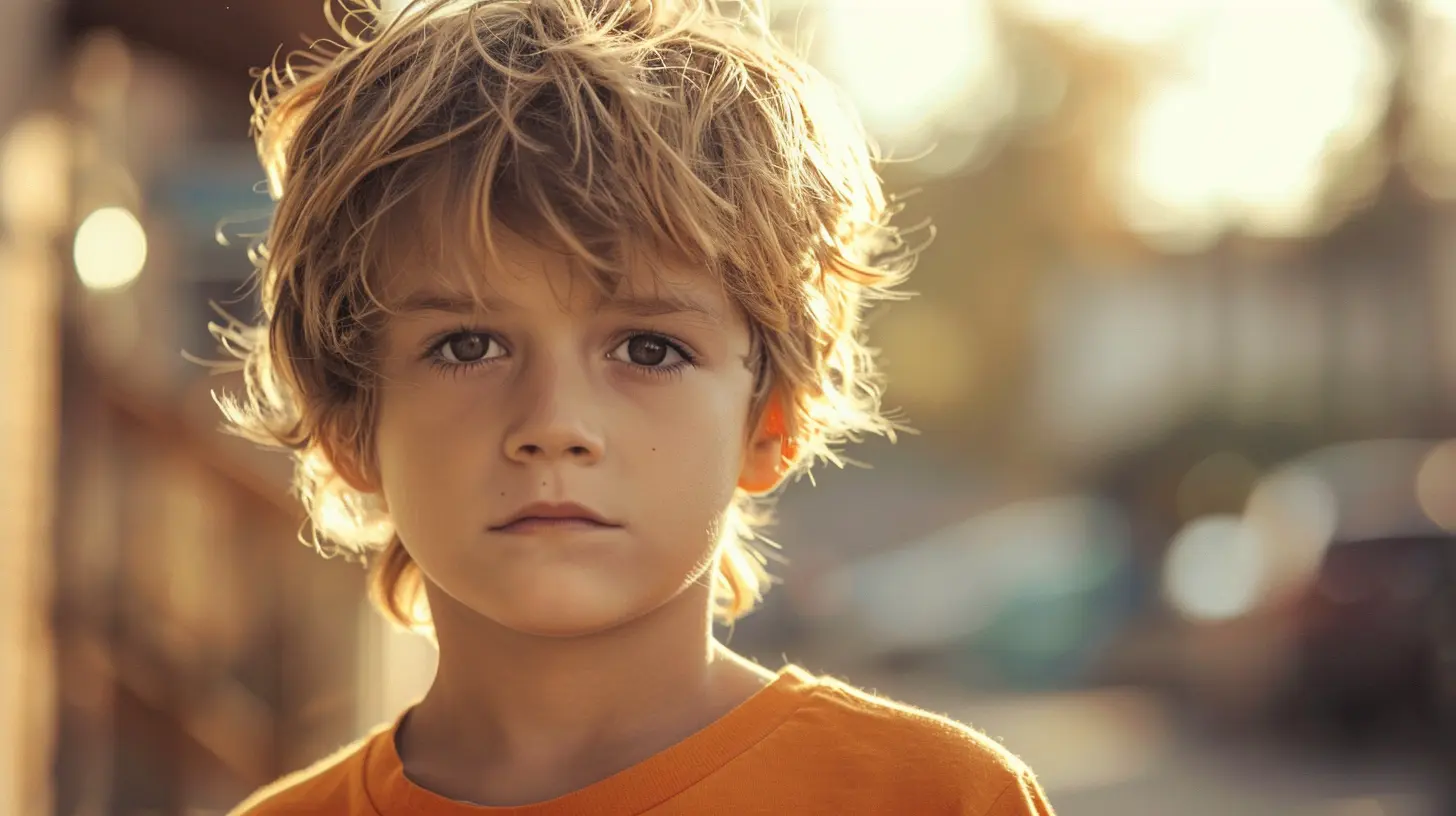How to Redirect Misbehavior in a Constructive Way
26 June 2025
Kids misbehave. It’s not a matter of “if” but “when.” Whether it’s a meltdown at the grocery store or kicking their sibling across the room, misbehavior is part of the parenting deal. The key question isn't how to stop it altogether (because spoiler alert: you can’t), but how to redirect misbehavior in a constructive way.
What does that even mean? It means guiding your child away from destructive, disruptive, or unsafe behaviors without yelling, shaming, or forcing obedience. Sounds like a tall order? It kind of is—but trust me, it’s doable.
Let’s break this down in a simple, heart-to-heart way. Parenting isn’t about being perfect—it’s about progress, intention, and a whole lot of grace. So, grab your coffee (or your cold cup you forgot an hour ago), and let’s dive into some practical strategies that actually work.
Why Kids Misbehave in the First Place
Before we jump into redirection strategies, we need to understand the “why” behind kids’ misbehavior. Because here’s the thing: behavior is communication.Kids don’t usually act out “just because.” There’s almost always a reason—even if it’s buried under layers of fatigue, hunger, or frustration.
Here are some common reasons why kids misbehave:
- Attention Seeking: Sometimes they just want you to look at them—even if it’s from across the room while you’re cleaning up their spilled cereal.
- Unmet Needs: Hunger, tiredness, overstimulation? Yup, those can turn any angel into a little hurricane.
- Testing Boundaries: This is especially true for toddlers and teens.
- Lack of Skills: A child might not know how to express big feelings or solve problems without lashing out.
- Trying to Gain Control: They want a say in their world, especially when they feel powerless.
Understanding this can help us pause before reacting and see misbehavior not as the enemy, but as a signpost.
What Does “Redirection” Really Mean?
Redirection isn’t about manipulating kids or tricking them away from bad behavior—it’s about guiding them toward better choices. Think of it like steering a ship gently back on course, instead of yelling at the waves.When you redirect behavior, you’re doing three important things:
1. Acknowledging their emotion or need
2. Setting a clear boundary
3. Offering an alternative behavior or choice
Not rocket science, right? But still super powerful.
Step-by-Step Guide to Redirect Misbehavior Constructively
1. Stay Calm Yourself First
I know. Easier said than done. But here’s a reality check: kids feed off our energy. If you escalate, they escalate.Take a deep breath. Count to five. Remind yourself: “My job is to be the thermostat, not the thermometer.” You set the emotional tone. If you're boiling over, you'll just fuel the fire.
💡 Pro tip: Walk away for a few seconds if you need to reset before responding. It's not weak, it's wise.
2. Name the Emotion Behind the Behavior
Let your child know you see them. Really see them. It might sound like:- “You’re really mad your tower fell down.”
- “You wanted that toy so badly, huh?”
- “You didn't like it when your brother changed the channel.”
Don’t confuse this with approving the behavior. You’re not saying biting is okay—you’re saying, “I understand what you’re feeling.”
When kids feel seen, they’re much more open to correction.
3. Set a Clear, Respectful Limit
Boundaries are love in action. But they don’t need to come with a lecture or a glare.Try something like:
- “It’s okay to feel angry, but it’s not okay to hit.”
- “We use gentle hands in this house.”
- “You can be mad, and I’m here to help.”
Notice how these still keep the line firm, but allow room for emotion. You’re separating the feeling from the behavior.
4. Offer an Acceptable Alternative
This is the heart of redirection. What CAN your child do instead?Let’s say your toddler is throwing blocks. Instead of saying “Don’t throw!” (which, let’s be honest, they’ll probably ignore), you can say:
- “Blocks are for building. If you want to throw something, let’s find a soft ball.”
- “I see you want to move your body—want to go outside and run?”
You're swapping the misbehavior with an acceptable outlet. You’re not just saying “no”—you’re giving a “yes” path.
5. Use Distraction for Younger Kids
For toddlers and preschoolers, distraction is gold. Their attention span is short, so it’s easier to redirect their focus than to explain why something’s wrong.If your two-year-old is trying to draw on the wall with crayons, scoop them up with a playful tone: “Let’s color on this paper instead—look, it’s a rocket ship waiting for us!”
Keep it light, keep it fun. They'll move on before the crayon leaves your carpet.
6. Let Natural Consequences Teach the Lesson
Not all behaviors need a “punishment.” Sometimes, natural consequences do the teaching for you.If your child refuses to wear a jacket, let them experience the chill. If they drop their toy too many times, it stays where it lands.
As long as it's safe, let the experience do the talking. Kids are smart—they learn from what they feel.
7. Stay Consistent with Boundaries
If sometimes you let it slide and other times you don’t, your child doesn’t know what to expect. Inconsistency breeds confusion.Set your limits and hold them with love and repetition. Even if your child protests (which they will), stay grounded.
You can say: “I know you don’t like this rule, but it’s my job to keep you safe and help you grow wise.”
8. Encourage Positive Behavior Regularly
Here's a radical idea: focus more on what your child is doing right than what they’re doing wrong.Catch them being helpful, kind, or calm—even in small ways. Say:
- “I noticed how gently you played with your sister—thank you.”
- “You handled that disappointment so well. I’m proud of you.”
When you water the good stuff, it grows.
What to Avoid When Redirecting Misbehavior
Let’s talk for a second about what NOT to do. Because sometimes good intentions go sideways.❌ Don’t Shame
Saying things like “What’s wrong with you?” or “You’re being bad” attacks the child, not the behavior. Shame isn’t a teacher—it’s a wound.❌ Don’t Yell
Yes, we’ve all lost it before. But yelling usually shuts down communication and ramps up fear. It may stop behavior in the short term, but it doesn’t teach.❌ Don’t Bribe
“Stop crying and I’ll give you candy.” Tempting, right? But this teaches kids to behave for rewards, not because it's the right thing to do.Real-Life Examples of Constructive Redirection
Need some visualizations? Here you go:Scenario 1: Hitting a Sibling
- Emotion: Frustration or jealousy.- Redirect: “You’re upset she took your toy. Let’s talk about it. You can say, ‘I’m not done yet.’”
Scenario 2: Screaming in Public
- Emotion: Overwhelm or attention seeking.- Redirect: “It’s loud here, huh? Let’s go outside for some quiet, then we’ll finish shopping.”
Scenario 3: Refusing to Clean Up
- Emotion: Resistance or defiance.- Redirect: “Want to race me to see who can pick up more blocks?” (Gamify it!)
Teaching Long-Term Skills Through Redirection
Remember, redirection isn’t a quick fix—it’s part of the long game.Every time you guide behavior constructively, you help your child build:
- Emotional regulation
- Self-awareness
- Problem-solving
- Empathy
That's way more valuable than blind obedience.
When to Seek Help
Sometimes, misbehavior is persistent or extreme. If your child is hurting themselves, others, or showing signs of emotional distress frequently, it might be time to check in with a pediatrician or child therapist.There’s no shame in seeking support. In fact, it’s a sign of strength.
Final Thoughts
Redirecting misbehavior in a constructive way isn’t about being the perfect parent—it's about being a present one. One who sees the child beneath the tantrum, respects their feelings, and leads with both firmness and kindness.It's not always easy. You won’t get it right every time (spoiler: none of us do). But every moment you choose connection over control, guidance over punishment, you’re investing in the kind of human your child will become.
And that? That’s the real win.
all images in this post were generated using AI tools
Category:
Positive DisciplineAuthor:

Karen Hurst
Discussion
rate this article
2 comments
Jillian McDonald
Great insights! Redirecting misbehavior with compassion fosters understanding and growth. Remember, every challenge is an opportunity to strengthen your child's emotional resilience and your connection. Keep up the fantastic work!
October 3, 2025 at 4:35 PM

Karen Hurst
Thank you for your kind words! I completely agree—compassionate redirection truly nurtures growth and strengthens connections.
Maxine Roberson
Redirecting misbehavior is like herding cats with glitter! Sprinkle a little creativity and playfulness into the mix. When life gives you tantrums, whip out a dance party or a silly sock puppet. Remember, laughter is the best GPS to guide tiny explorers back on track. Happy parenting!
July 1, 2025 at 3:23 PM

Karen Hurst
Thank you for your whimsical take! Injecting creativity and humor truly makes redirection more effective and enjoyable for both parents and kids. Happy parenting! 🌟


